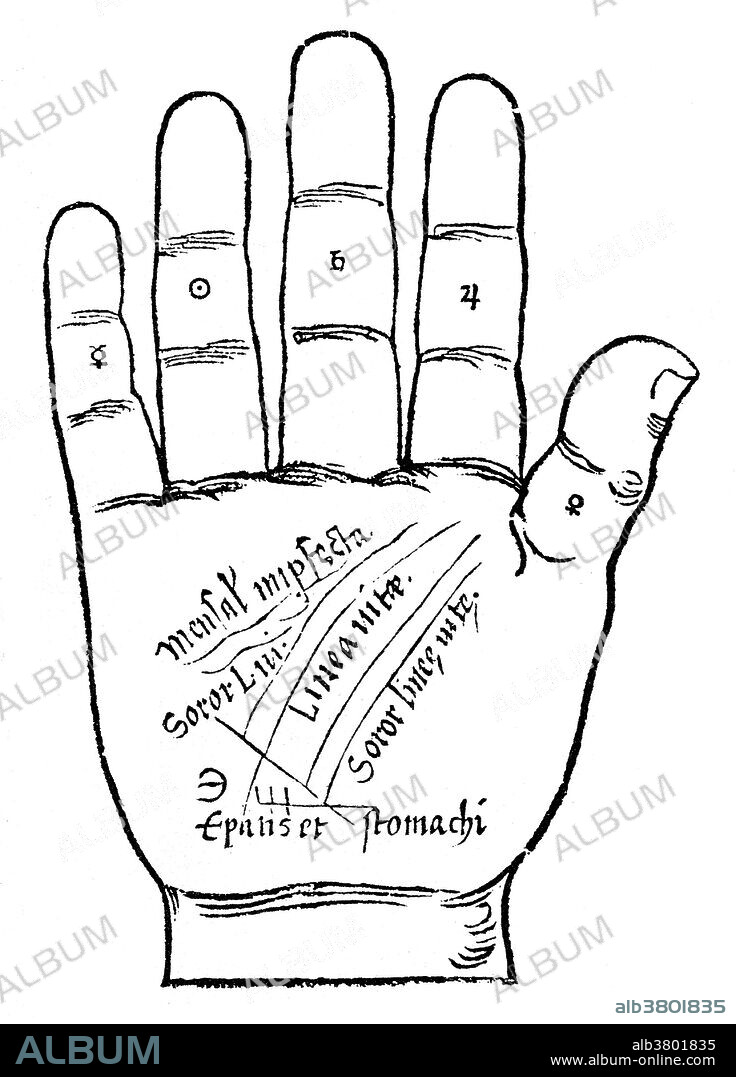alb3801835
Palmistry, Indagine Palm Lines, 16th Century

|
Zu einem anderen Lightbox hinzufügen |
|
Zu einem anderen Lightbox hinzufügen |



Haben Sie bereits ein Konto? Anmelden
Sie haben kein Konto? Registrieren
Dieses Bild kaufen.
Nutzung auswählen:

Titel:
Palmistry, Indagine Palm Lines, 16th Century
Untertitel:
Siehe automatische Übersetzung
John Indagine was a 16th Century German chiromancer and Carthusian Prior. His book "Introductiones Apotelesmaticae" was published at Strasbourg in 1522 as a complete treatise on astrology, chiromancy and physiognomy. Palmistry is the claim of characterization and foretelling the future through the study of the palm. The practice is found all over the world, with numerous cultural variations. Those who practice chiromancy are called palmists, palm readers, hand readers, hand analysts, or chirologists. There are many, often conflicting, interpretations of various lines and palmar features across various schools of palmistry. These contradictions between different interpretations, as well as the lack of empirical support for palmistry's predictions, contribute to palmistry's perception as a pseudoscience. During the Middle Ages the art of palmistry was actively suppressed by the Catholic Church as pagan superstition. In Renaissance magic, palmistry was classified as one of the seven "forbidden arts," along with necromancy, geomancy, aeromancy, pyromancy, hydromancy, and spatulamancy (scapulimancy).
Bildnachweis:
Album / NYPL/Science Source
Freigaben (Releases):
Model: Nein - Eigentum: Nein
Rechtefragen?
Rechtefragen?
Bildgröße:
3127 x 4350 px | 38.9 MB
Druckgröße:
26.5 x 36.8 cm | 10.4 x 14.5 in (300 dpi)
Schlüsselwörter:
16. JAHRHUNDERT • 16. JH. • HANDLESEKUNST • HANDLESEN • ILLUSTRATION • ILLUSTRATIONS • OMEN • ORAKEL • PROPHEZEIUNG • WAHRSAGEN • WAHRSAGEREI • WEISSAGUNG
 Pinterest
Pinterest Twitter
Twitter Facebook
Facebook Link kopieren
Link kopieren Email
Email
